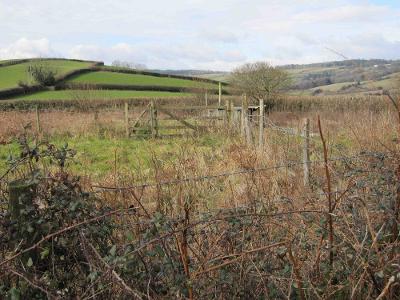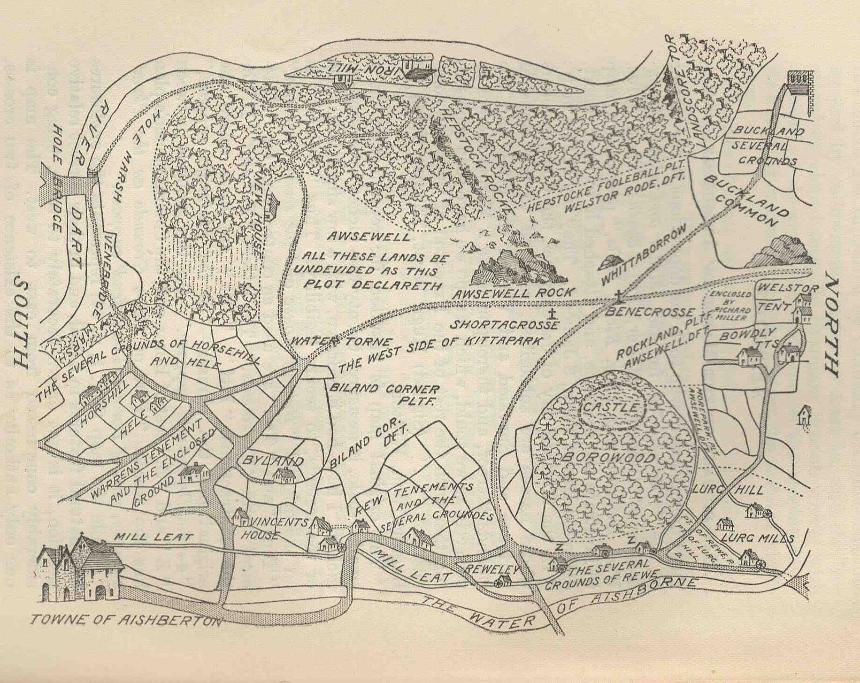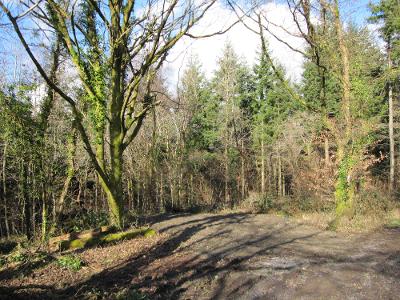Camps and enclosures
Archaeological periods
Neolithic 4000BC - 2300BC
Bronze Age 2300BC - 800BC
Iron Age 800BC - AD43
Roman AD43 -410
Anglo-Saxon 410 - 1066
P F S Amery: 1874. 'Had this subject been undertaken by one of our members versed in archaeology.... we might expect that his experience and learning would throw some ray of light through the darkness which obscures the origin and use of the many hill forts, castles, rings, or by whatever name the earthworks may be called, which crown so many of our hills in the South Hams and other parts of the county. But in the absence of such a paper, I can simply place on record in the Transactions of our Association the existence and present state of five such remains, fast passing from view, two of which are only remembered by a few seniors of our town, among whom is Mr Robert Tucker; another scarcely traceable, as year by year the plough levels its ramparts and fills its ditches; whilst the others are so hidden in dense woods that few know even of their whereabouts....'
P F S Amery, Report and Transactions of the Devonshire Association, vol 6, 1873 - 74, Plymouth p261ff
Camps on Ashburton Down. 'On an elevated and exposed heath, known as Ashburton and Storms down, but formerly Estdowne, a great part of which is now enclosed and planted, existed, within the memory of the present generation, as far as I have been able to discover, two enclosures, each formed by a ditch. One seems to have surrounded the western crest of the hill behind Alston plantation, the other the eastern crest on Storms down, about half a mile distant.'
ibid
Right: Ashburton Down
My own photograph 2016

Place Wood, or Tower Hill Castle. 'About a mile north east of Ashburton rises a steep hill knownas Tower Hill, in fact a spur of Ashburton Down... on the highest point of which, and adjoining the road, can still be traced, by the undulations of the ground, the remains of an ancient foss*, in two fields called Castle Parks, surrounded on two sides by Place Wood and Whiddon Cliff Copse. This spot, once a hill fort... '
ibid
'A...camp near Ashburton was first recognised by the names of two fields on the site, known as Castle Parks, in which flints are frequently found after ploughing...'
P F S Amery, Devon Notes and Queries, vol 1 p149
Boro Wood Camp. About a mile and a half north of Ashburton, and separated from Tower Hill by a stream... is Boro Wood... At the highest part of this wood there is [an] enclosure, formed by a ridge of stones from twelve to twenty feet wide... I calculate it to contain four acres.'
P F S Amery, Report and Transactions of the Devonshire Association, vol 6, 1873-74, Plymouth, p261ff

Above: Map of Ashburton, 1605. Redrawn by J S Amery from an original.
J S Amery's Presidential Address, Report and Transactions of the Devonshire Association, Plymouth 1925, p94
Holne Chase Castle. ** 'On the peninsula of Holne Chase, surrounded on three sides by the deep valley fo the Dart, and two hundred feet above the river... It consists of a perfect fosse, between thirty and forty feet wide...'
P F S Amery, Report and Transactions of the Devonshire Association, vol6, 1873-74, Plymouth, p261ff
* A long narrow trench http:/?www.oxforddictionaries.com
**Described as an Iron Age hillfort on http://www.pastscape.org.uk (information from the National Record of the Historic Environment) - Accessed 2-07-2016
In 1870 about a dozen flat iron bars were found about 50 yards outside the fosse; resembling heavy spear heads, they were about twenty four inches long and two inches broad, tapering at one end. The gamekeeper who found them broke most of them against the rocks where he found them, but he carried two or three back to Sir Bourchier Wrey's house, where they were used as supports under a cucumber frame. When he heard about the find P F S Amery managed to get two specimens, one with a pointed end and one folded over - but they both were a 'brittle mass of rust'. The bars were difficult to date, and were originally thought to be unfinished weapons. However, after consultation with a Reginald A Smith of the British Museum, who had written a paper on the subject, Amery suggested that they may have been examples of ancient British currency.
P F S Amery, Report and Transactions of the Devonshire Association, vol 38, 1906, p370ff
Circa 54BC, Caesar commented of the British, 'As money they use either gold or bronze coins or iron bars with a fixed standard of weight.'
Caesar's Gallic War 5.12
See http://hist-met.org/images/pdf/hmsdatasheet08.pdf for more on currency bars, plus illustrations and further references - Accessed 2-12-2018

On one of William Crossing's 'Shorter Excursions' from Ashburton he states that to the right of the road between Woodencliff Wood and Place Wood are the remains of an ancient hill fort. 'When in a complete state the camp was apparently not more than 300 yards in circumference.'
Crossing's Guide to Dartmoor, William Crossing, reprint of 1912 edition, David and Charles 1981, pp343, 344
Woodencliff Wood and Place Wood are about 500m up Tower Hill, which leads from Roborough Lane (crossed by Rew Road).
An earthwork is shown on Ordnance Survey maps.
Above: Woodencliff Wood (called Whiddon Hill Copse by P S Amery, above)
My own photograph 2016
*******
'Boro Wood Camp is a mile and a half north of the town, and separated from Tower Hill by a stream called the Yeo, but formerly the Ashburn. The ridge of stones forming the enclosure is from twelve to twenty feet wide, and there is no ditch. A spindle whorl* was once found among the stones of the rampart.'
Ashburton and its Neighbourhood, Charles Worthy, publ and printed L B Varder, Ashburton 1875, piv
*Usually a disc added to a spindle to aid spinning. Search for 'Spindle whorl' at http://rammcollections.org.uk
An enclosure is shown on Ordnance Survey maps.
See the Legendary Dartmoor website http://www.legendarydartmoor.co.uk/hill_forts.htm for a map showing iron age hillforts and settlements in the area: Hembury, Holne Chase Castle, Boro Wood, Mountsland Common, Berry's Wood and Denbury camp. To these can be added the recent discovery of an iron age round house at Ipplepen.
*******
Items on the Roman period have now moved to Early History